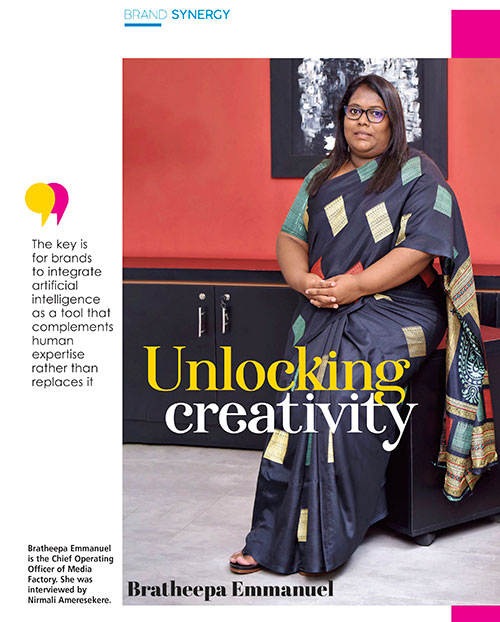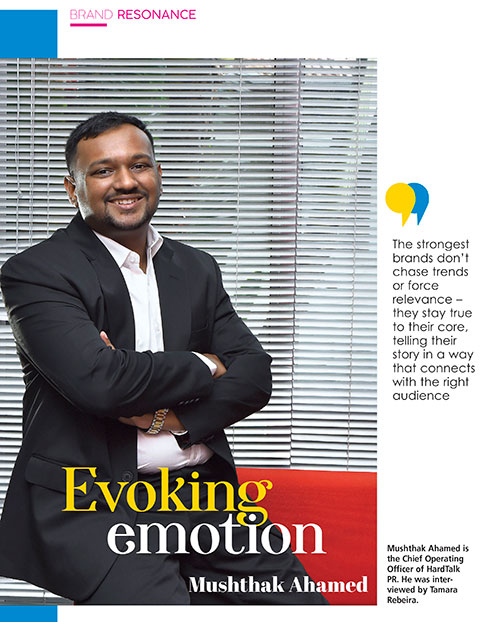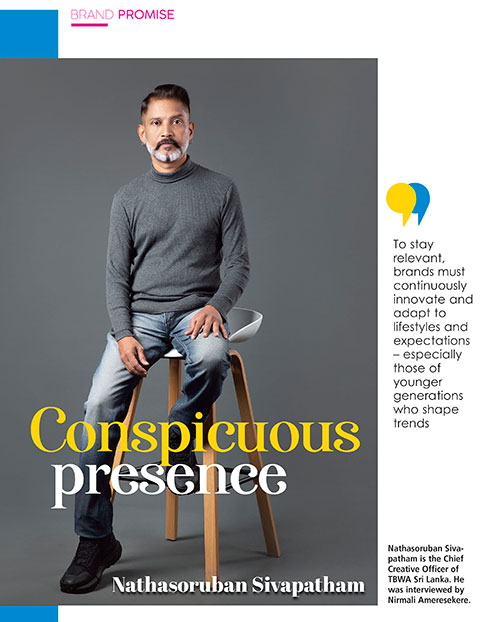BRAND PULSE
Power of identity
Nadiyah Akram
Q: How would you define a strong brand – and what key elements contribute to brand building?
A: A brand must connect at an emotional level before it can convince people rationally. It earns trust not only by meeting a need but also standing for something people want to believe in or be a part of. The deeper the connection, the stronger the brand becomes.
At the heart of a strong brand is clarity and consistency. When its values are reflected across every touchpoint from its product and message to its people and actions, it creates an identity that feels authentic and credible.
When individuals feel good about a brand, they become advocates and nothing is more powerful than someone else telling your story for you.
Aligning values, emotional connection and trust also makes a brand resilient, and able to weather trends and crises. Without this foundation, it may generate attention but rarely build loyalty.
Q: In today’s competitive landscape, what challenges do businesses face when developing a brand identity?
A: We are building brands in an era of noise, scepticism and audience fragmentation. Today, brands are faced with having to connect with multiple mindsets while finding common ground.
In this context, it’s even more important to build brand frameworks that apply to different audiences without diluting your core message.
There is also a sharper spotlight on authenticity, relevance and relatability. In a culture shaped by social media and increased public scrutiny, audiences are quick to challenge anything that feels performative.
Saying the right things isn’t sufficient; you have to live them. And that is why internal communications can’t be an afterthought. Employees play an important role in bringing a brand to life. When they connect with the brand’s purpose, they become valuable ambassadors.
The real balancing act is between staying relevant in the moment and investing in a long-term brand identity. Shrinking attention spans make it tempting to jump on every trend but long-term value comes from a clear, consistent sense of purpose.
Strong brands are intentional and only pick trends that reinforce their values.
Q: With AI and automation becoming more prevalent, how can brands maintain the human touch while embracing digital advancements?
A: We’ve been at this crossroads before. Every major shift – whether it was digital, mobile or social – sparked similar concerns. And each time, the brands that thrived weren’t the ones that resisted change but those that adapted.
Artificial intelligence gives us reach, speed and a level of insight that’s hard to ignore. It helps personalise experiences, predict behaviour and create content faster than before. But it doesn’t yet understand nuance, discretion, emotion or context the way humans do.
There’s a risk in over automating. Brands can end up sounding polished but generic; and when everything sounds templated, people tune out. As we figure out our approach, there are a few factors worth considering.
Using AI for data heavy work enables people to focus on thinking, connecting and storytelling. Setting tone guidelines and building human reviews into the loop protects your brand voice.
Investing in skills such as prompting, critical thinking and creative direction will be as essential as writing and media relations. As these tools become more powerful, being thoughtful about how we use them by respecting privacy, avoiding bias and being transparent about when AI is part of the process will help maintain trust.
As artificial intelligence evolves, we will use it to create campaigns, test ideas, generate visuals, and shape brand experiences in real time and more. At the same time, communication roles will evolve, not to compete with AI but guide it and ensure the human touch runs through everything we do.






